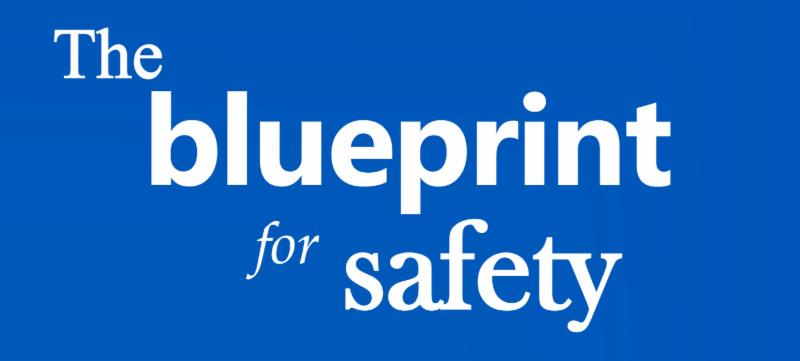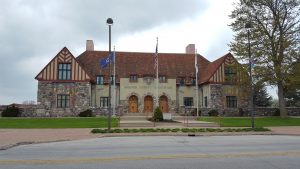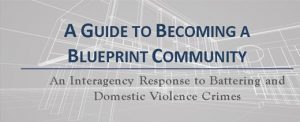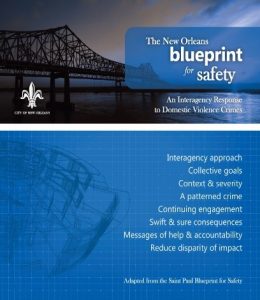
E-Newsletter on Reforming Criminal Justices Responses to Battering
Praxis provides training and consultation for criminal legal system practitioners and community-based advocates to adapt, implement, and monitor the Blueprint for Safety (Blueprint) in their communities. This e-newsletter features information about the foundations of the Blueprint model, what’s happening in Blueprint communities, and information about how Blueprint communities have uncovered disparity of impact, along with tools and upcoming training events. We hope it helps you to succeed in your system reform efforts!
Becoming a Blueprint Community
Community Spotlights
Grounding our Response in Victim Experiences
Tools for System Reform
Blueprint in the News
Blueprint Communities
 Becoming a Blueprint Community
Becoming a Blueprint Community
What is the Blueprint for Safety?
How are we intervening in battering and the unique nature of this particular kind of violence against women, characterized by ongoing coercion, control, and violence?
Does our response make people safer? Are we reaching those who are most dangerous and cause the most harm? Are we paying attention to how our intervention impacts victims of battering and the community?
Beginning in 2007—after decades of experience in reforming the criminal legal system’s response to domestic violence crimes and exploring “coordinated community response”—St. Paul,  Minnesota, asked such questions of itself. A partnership of advocates, system practitioners, and a faith-based economic and social justice coalition united to examine whether and how the community was meeting these goals. To implement the recommendations of a Safety and Accountability Audit conducted in 2007, the partnership sought support from the Minnesota Legislature to create a comprehensive, unified framework that would define how the criminal legal system should respond to domestic violence-related crimes. The result was the St. Paul Blueprint for Safety, which built upon the long history of institutional change developed by the Duluth Domestic Abuse Intervention Project (“Duluth Model”) and the St. Paul Intervention Project. Praxis tailored St. Paul’s Blueprint for broader adaptation across the country.
Minnesota, asked such questions of itself. A partnership of advocates, system practitioners, and a faith-based economic and social justice coalition united to examine whether and how the community was meeting these goals. To implement the recommendations of a Safety and Accountability Audit conducted in 2007, the partnership sought support from the Minnesota Legislature to create a comprehensive, unified framework that would define how the criminal legal system should respond to domestic violence-related crimes. The result was the St. Paul Blueprint for Safety, which built upon the long history of institutional change developed by the Duluth Domestic Abuse Intervention Project (“Duluth Model”) and the St. Paul Intervention Project. Praxis tailored St. Paul’s Blueprint for broader adaptation across the country.
The Blueprint for Safety (Blueprint) is a coordinated justice system response to domestic violence crimes that positions this complex system to respond more quickly and effectively and enhance its capacity to stop violence, reduce harm, and save lives.
The Blueprint grew from a recognition that while there have been many improvements and gains in the criminal legal system’s response to battering, the coordinated community response (CCR) has sometimes floundered under the realities of making change in such a complex system, such as:
- An overall drift from the original purpose of CCR to create systemic change,
- System reform replaced by meeting for the sake of meeting, with emphasis on who should come to the table rather than what should be done,
- Focus on individual cases rather than systemic problems,
- Policy development in a few agencies (e.g., law enforcement or prosecution), but rarely for all agencies that handle domestic violence cases.
The Blueprint is a distinct blend of an approach, a document, and a process that together fully embody the ideal CCR. As an approach, the Blueprint is a shared way of thinking about battering and domestic violence. It gets everyone on the same page under a common understanding of how this violence works and what interventions are effective. As a document, the Blueprint is a comprehensive set of written policies, protocols, and training memos based on research and best-known practice. The Blueprint is also a process for shared problem solving based on regular monitoring and adjustments to practice.
Since the Blueprint was finalized in 2010, several other communities have added to St. Paul’s work by adapting the Blueprint in their communities, under grants from the Office on Violence Against Women (OVW). These include Duluth, MN; New Orleans, LA; Shelby County/Memphis, TN; Marquette County and Midland County, MI; and Richmond, KY. Other communities around the country have followed suit using other funding sources (see below).
A Guide to Becoming a Blueprint Community is a result of the lessons learned from early adapters. View the free online version for easy access to resources that your community may use to consider or initiate becoming a Blueprint community. The adaptable Blueprint policies, protocols, and training memos are also available for free download on the Praxis Blueprint materials webpage.
 Community Spotlights
Community Spotlights
St. Paul, Minnesota – Monitoring for Success  St. Paul, Minnesota has become a model Blueprint community since launching the country’s first Blueprint for Safety in 2010. Over the past seven years, St. Paul has established an impressive process for monitoring Blueprint implementation. The St. Paul Blueprint Steering Committee is a working group of agency leaders facilitated by the St. Paul Blueprint Coordinator, Bree Adams-Bill with TA support from Praxis staff Julie Tilley and Denise Eng. Bree is an advocate with the Saint Paul & Ramsey County Domestic Abuse Intervention Project (SPIP), who recently received an Improving the Criminal Justice Responses grant from the Office of Violence Against Women (OVW) to support their Blueprint work.
St. Paul, Minnesota has become a model Blueprint community since launching the country’s first Blueprint for Safety in 2010. Over the past seven years, St. Paul has established an impressive process for monitoring Blueprint implementation. The St. Paul Blueprint Steering Committee is a working group of agency leaders facilitated by the St. Paul Blueprint Coordinator, Bree Adams-Bill with TA support from Praxis staff Julie Tilley and Denise Eng. Bree is an advocate with the Saint Paul & Ramsey County Domestic Abuse Intervention Project (SPIP), who recently received an Improving the Criminal Justice Responses grant from the Office of Violence Against Women (OVW) to support their Blueprint work.
Long-term success of the Blueprint relies on each agency’s commitment to accountability, internally and system-wide. Currently in St. Paul, the Steering Committee is conducting an interagency review of domestic-related cases to determine if the key features of the Blueprint are evident throughout case processing. While doing so, the interagency monitoring team is also focusing on uncovering implicit and explicit racial and gender bias. The goal is to minimize disparate impact and unintended consequences to both victims and offenders.
The St. Paul Blueprint interagency monitoring team recently reviewed 51 domestic-related 911 calls to determine if tele-communicators are adhering to their Blueprint policy. We assessed for these Blueprint essential elements:
1) Elicit information about weapons,
2) Document history of aggression by suspect,
3) Document level of violence, threats made and victim fear, and
4) Use of victim engagement strategies.
In addition, we assessed for if and how any gender or racial disparity may be occurring.
Thirty-four (34) of the 911 calls were identified as intimate partner violence. The team is now reviewing these 34 cases within patrol to measure if key features of the Blueprint’s patrol response are working, including:
1) Completeness of reports, including evidence (photos, medical releases),
2) Use of victim engagement strategies
3) Use of the Blueprint Risk Questions,
4) Use of children and witness engagement strategies (interviews, statements), and
5) Officers’ actions overall.
The monitoring teams will continue to assess each of the 34 cases as they progress through the system to determine and adjust intervention responses that may produce disparate impact, while ensuring the Blueprint is fully institutionalized by each government agency.
Midland County, Michigan – Transforming Officer Engagement with Victims 
The Blueprint for Safety in Midland County, MI, is coordinated by Vicki Wakeman and Savannah Crist of Shelterhouse, the local shelter, advocacy, and counseling service provider for domestic violence and sexual assault survivors. The Midland County Blueprint implementation team is engaged in Phase 2 of Blueprint implementation: actively learning about the system’s current response to domestic violence crimes to inform their Blueprint adaptation via system mapping, focus groups with survivors, interviews and observations with practitioners and case file review.
Bringing practitioners together across all agencies for collaborative working sessions has created a new and exciting energy within the Midland Police Department. Not only did the Midland Police Department incorporate the Blueprint Risk Questions into their domestic violence investigations immediately, but they also proactively sought direct input from victims about their experiences with law enforcement and the system overall.
1) Do you think he/she will seriously injure or kill you or your children? What makes you think so? What makes you think not?
2) How frequently and seriously does he/she intimidate, threaten, or assault you? Is it changing? Getting worse? Better?
3) Describe the time you were the most frightened or injured by him/her.
While organizing a law enforcement training on the Blueprint Risk Questions, the Midland Blueprint Coordinator and Advocate included a focus group for officers to hear directly from victims. The officers observed the focus group as a “fishbowl” while Vicki and Savannah facilitated the conversation. When focus groups of survivors are held in the presence of practitioners, interaction between the two is typically limited for a variety of reasons. The focus group participants in Midland, however, expressed an interest in engaging with the observing officers. After the facilitated portion of the conversation, Vicki and Savannah reviewed and read aloud written questions from the officers. At the end of the training, officers and survivors approached one another to continue their conversations. Other Blueprint sites across the country look forward to incorporating Midland’s approach to training officers and other practitioners about the importance of victim engagement in a Blueprint response.
 Grounding our Response in Victim Experiences
Grounding our Response in Victim Experiences
Victim Engagement in The Blueprint
“I’m not a social worker or counselor…my job is just to [get the facts], [make an arrest], [prosecute the case]…”
Many an advocate or system reformer has heard something similar from police officers, probation officers, prosecutors, or others in the criminal legal system intervening in domestic violence cases. It’s not that they are unsympathetic, but rather that their training or orientation to their job does not provide either guidance or a rationale for prioritizing the nature and quality of interaction with victims. In a large, impersonal system that is often fragmented in its treatment of domestic violence cases, it’s easy for practitioners to define their work simply as completion of a set of tasks rather than seeing how their actions fit into the intricate chain of steps taken across the system and how their individual actions contribute to a positive outcome.
A domestic violence crime is rarely fully resolved with the first intervention. Most practitioners charged with intervening in domestic violence cases understand that these single acts of violence are usually part of a patterned use of coercion, intimidation, and the use or threat of violence—namely, battering. As such, the relationship is characterized by a continuing set of violent and/or controlling actions committed over time and in countless situations. Yet the criminal legal system is organized to process assaults as individual events, in contrast to how victims experience battering.
The patterned nature of battering means that contact with a victim or offender will likely continue for an extended period of time. This extended contact provides the opportunity to build relationships that reinforce safety and accountability in lasting ways. How a victim is treated will shape her or his willingness to share important information about the violence. For example, a police officer who approaches a victim with respect and kindness will be able to conduct a better investigation and write a stronger report. That same victim may be more open to the next practitioner who contacts her to talk about the case. Research tells us [note]Goodman and Epstein (2008, p. 78) note, “Other research has shown that women who experience government officials as listening to their stories and responding to their individual needs are more likely to feel treated fairly and therefore to cooperate with the prosecutor’s requests than are women who feel forced into a mandatory model dismissive of their input (Erez & Belknap, 1998; Ford & Regoli, 1993).” A perpetrator may not stop battering the victim, but victims do not stop working toward non-violence. (Campbell et al., 1998, pp. 743-762). Goodman and Epstein (2008, p. 94) goes on to explain that “one study … found that participants who reported feeling in control of the process of working with service providers were far more likely to rate the services they received as helpful and to use them again. (Zweig, Burt, & Van Ness, 2003) Similarly, a study within the criminal justice system found that victims who chose not to report recidivist abuse to officials were those who felt they had ‘no voice’ in a previous prosecution.” Also see Belknap and Sullivan (2003, p. 6)[/note] that victims of battering report feeling more positive about their interaction with the criminal legal system if they experience a sense of partnership with someone in the system, regardless of the outcome of the case.
In the Blueprint, victim engagement means to (1) Treat people well, and (2) Take specific steps to provide concrete help. The Blueprint provides guidance to fulfill these goals:
- Wherever possible, minimize the victim’s need to confront the offender.
- Protect the victim from retaliation when using information that she or he has provided.
- Treat each interaction with the victim as an opportunity to build collaboration over multiple interventions (even when a victim starts out hostile to those interventions).
- Stay mindful of the complex and often dangerous implications of a victim’s collaboration with interveners.
- Be aware that the fundamental purpose of battering, which characterizes the majority of domestic violence criminal cases, is to control what the victim says, thinks, feels, and does.
- Engage in a dialogue with the victim rather than treating her or him as a data point.
- Avoid unintentionally reinforcing the abuser’s actions: offer a clear alternative to messages that the victim is crazy, at fault, unbelievable, and unable to make decisions, and that the abuser is unstoppable.
Here are some examples of the ways in which practitioners are directed in the Blueprint to actualize these principles:
911 Call-Takers are directed to…
- Employ specific strategies for communicating with callers who are having difficulty communicating, such as, those who are injured, intoxicated, emotionally upset or angry, have Limited English Proficiency, and others (such as asking yes or no questions
- Follow specific criteria about when to stay on the line with callers
- Reassure callers that they did the right thing by calling and can always call back if necessary
Law Enforcement Officers are directed to…
- Provide concrete help by connecting victims with medical services, securing damaged windows or doors whenever possible, securing shelter, providing victims’ rights information, and connecting victims with advocacy services.
- Communicate with victims in ways that leave an open door for future calls.
- Provide calm reassurance even when the victim is angry or hostile to officers.
- Prevent retaliation by not telling the suspect what the victim has said or asking if the victim wants him arrested.
- Communicating with the victim about charging decisions
Prosecutors are directed to…
- Provide clear guidance on how to consider requests for no contact orders individually based on the severity, risk and the needs of individual victims.
- Meet with victims and answer their questions about the risks and benefits of testifying or otherwise participating in the legal process.
- Ensure that victims are not threatened with arrest for refusing to participate.
- Probe for the impact of the criminal case on the victim’s life and consider this impact in plea negotiations.
An investigator utilizing these strategies for victim engagement explained:
If I treat her with respect and let her know I’m concerned the first time I meet her, when it happens again she is more likely to take my call, or even call me. If I get frustrated and angry because I need her in order to get to him and I throw up my hands, saying ‘fine, you want to live that way go ahead,’ then I’m just one more person slapping her in the face.
Read more about victim engagement on the Blueprint Materials page of the Praxis website.
 Tools for System Reform
Tools for System Reform
Practitioner’s Guide to Risk and Danger
Under the Blueprint, assessing for risk and danger is built into each step in the response. From the 911 call-taker to the judge and the supervising probation officer, everyone is positioned to understand, collect, and communicate information about the kind of violence that is occurring (context) and the level of harm that has occurred and is likely to occur in the future (dangerousness). The Blueprint seeks to provide practitioners at each point of intervention with the knowledge, authority, and capacity to adjust responses along a continuum of interventions, moving to an elevated and then maximum response depending upon the circumstances surrounding the case.
The Blueprint approach differs from that of actuarial tools designed to measure specific acts or factors, such as prior assaults or employment status, and produce a score. The Blueprint seeks to “connect the dots,” i.e., to paint a picture of the violence in context and make that picture visible throughout the criminal case process. In that sense, the Blueprint takes a qualitative approach to analyzing risk and danger, using a more narrative framework that adds to, but does not replace, any actuarial tools used to complete certain tasks, such as making pretrial release recommendations.
The Practitioner’s Guide to Risk and Danger is an abbreviated list of factors related to risk and danger in domestic violence. The presence of these indicators suggests that one of the following outcomes is likely without effective intervention: the violence will (1) continue, (2) escalate, and/or (3) become lethal.
Practitioners should not assume that the Guide to Risk and Danger lists every possible risk marker for continued violence or lethality. Instead, the guide uses key categories of risk to identify the indicators of severe violence or lethality. Each practitioner should be familiar with, look for, and document the key categories of risk and danger included in the guide. They can then weigh this information from the research with their own experience in domestic violence cases and the conditions highlighted in the guide as particularly associated with increased risk and lethality.
When there is violence without these risk factors, practitioners should consider the probability that this is a case of either resistive violence or non-battering related domestic violence and adjust their response accordingly.

The Blueprint Guide is a step-by-step resource to becoming a Blueprint for Safety community. Starting with a readiness assessment, the Guide lays out the phases, processes, and key people needed to successfully adapt, implement, and monitor a Blueprint response. Explore the Blueprint Guide Appendices for a comprehensive set of tools and guides for enhancing your community’s response to domestic violence.
 Blueprint in the News
Blueprint in the News
 Blueprint Communities
Blueprint Communities
| St. Paul, MN | Midland County, MI | Rice County, MN |
| Duluth, MN | Marquette County, MI | Mankato, MN |
| New Orleans, LA | Richmond, KY | Winona, MN |
| Shelby County, TN | Albemarle County, VA | Plymouth, MN |
| Marin County, CA |
We are always interested in learning about communities around the country that are implementing Blueprints. Please contact info@praxisinternational.org if you don’t see your community listed here.
 Contact us for help and information on the Blueprint
Contact us for help and information on the Blueprint
Spring 2017
This project was supported by Grant No. 2015-TA-AX-K032 awarded by the Office on Violence Against Women, U.S. Department of Justice. The opinions, findings, conclusions and recommendations expressed here are those of the author(s) and do not necessarily reflect the views of the U.S. Department of Justice.




